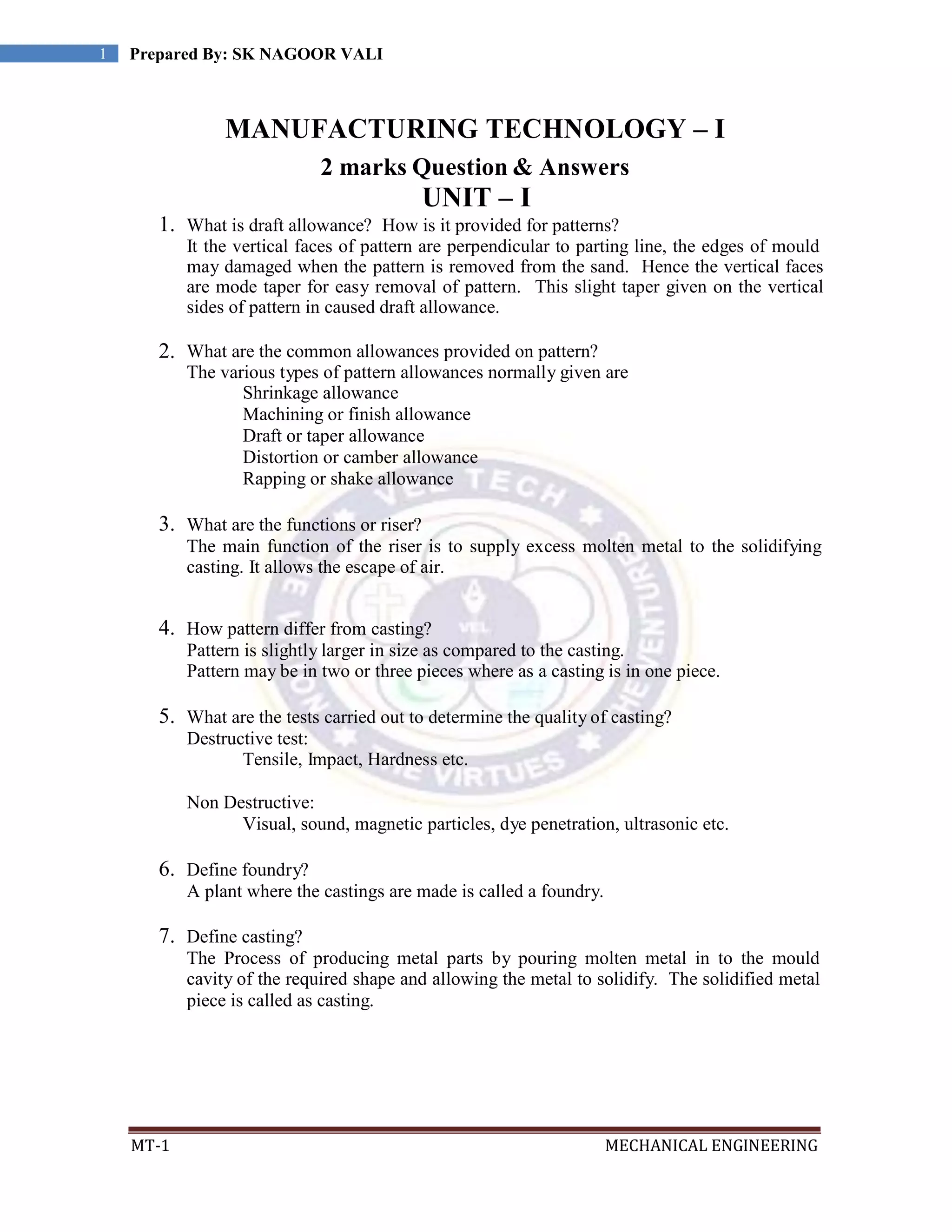The document provides information about manufacturing technology and mechanical engineering. It contains questions and answers related to topics like patterns, casting, molding, cores, foundry processes and defects. It also discusses various welding and joining processes like gas welding, arc welding, resistance welding, soldering and their principles, equipment, advantages and defects. The document aims to impart knowledge on the fundamentals of manufacturing and mechanical engineering.














